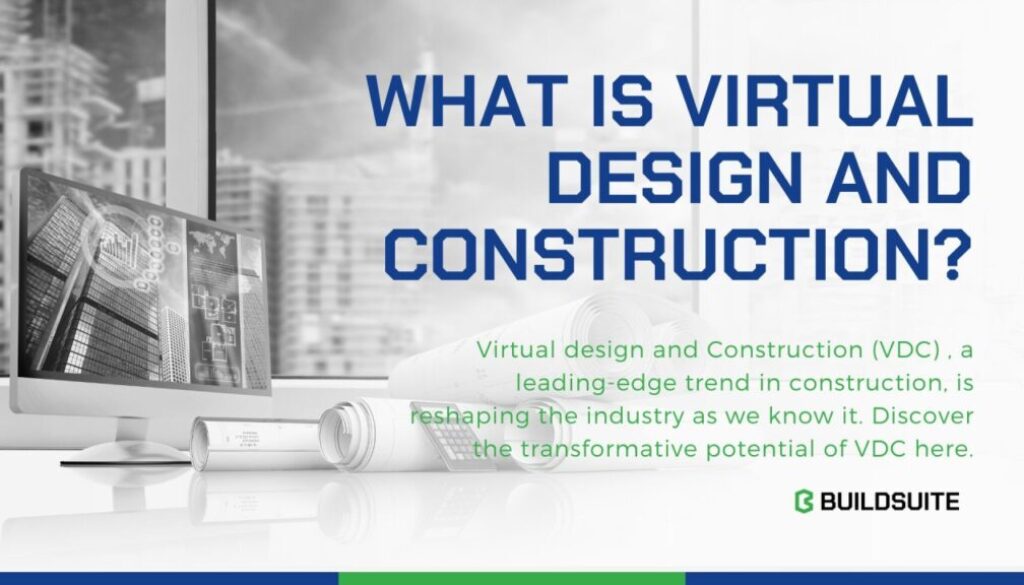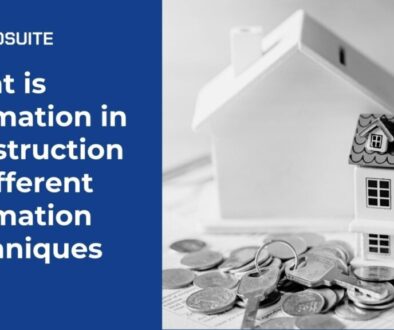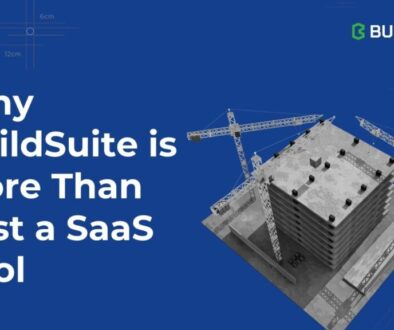What Is Virtual Design and Construction?
To keep ahead in the ever changing construction sector, one must welcome innovation. Virtual Design and Construction (VDC) provides a digital revolution to conventional building procedures, making it a symbol of progress. VDC gives stakeholders the ability to plan, envision, and carry out construction projects with previously unheard-of accuracy and efficiency by utilizing cutting-edge technologies. Let’s examine VDC in more detail, including its importance, advantages, and difficulties that it raises for contemporary building methods.
Why is virtual design and construction (VDC) used in construction?
For a long time, spreadsheets and paper documentation have been standard in the construction industry. But these approaches have serious drawbacks, particularly when it comes to project management on a broad scale. Despite spreadsheets’ inherent shortcomings, a significant 45% of project management workflows still rely on them, according to the 2021 JB Knowledge ConTech Survey.
Spreadsheet use presents a number of difficulties. Errors can go undiscovered until they cause serious problems, and it can be challenging to identify their source. Spreadsheets and paper-based documents also make planning and decision-making more difficult. Schedules, labor needs, equipment, and cost can all be affected by even little adjustments, which can cause delays and productivity losses.
Even if some stakeholders have switched to point solutions, the lack of integration and interoperability in these systems compromises data integrity and makes planning more difficult. As a result, important choices could be postponed, resulting in last-minute changes during the building stage, when there is little control over the project’s course.
The construction industry has used virtual design and construction (VDC) as a solution after realizing these difficulties. Early in the project lifecycle, VDC facilitates thorough planning and decision-making, which reduces the need for last-minute modifications during construction. Stakeholders can improve project results and overall efficiency by anticipating and proactively addressing possible difficulties by utilizing VDC technologies.
What is VDC (Virtual Design and Construction)
Architects, engineers, and contractors can now create detailed digital models of buildings and project sites thanks to Virtual Design and Construction (VDC), a revolutionary technology that digitizes the building process. The design, procedures, timetables, budgets, and every other facet of a construction project may all be visualized and planned with the help of these VDC models.
Businesses can thoroughly examine construction designs from start to finish by utilizing VDC technologies, even before any actual work is done on the site. In order to engineer and visualize projects in a digital domain, this entails using virtual environments, including Building Information Modeling (BIM) and advanced Construction Management Software.
The allure of Virtualized Design-Building (VDC) is its capacity to enable cooperation between various project participants, including designers, contractors, owners, and subcontractors, in a virtual setting. Here, they can jointly assess different choices, decide on important matters, and improve procedures, such material selection and sequencing, before breaking ground.
Essentially, VDC makes it possible for projects to be built twice: digitally first, and then physically, in accordance with the proverb “measure twice, cut once.” This methodology not only improves accuracy but also reduces errors and streamlines processes across the construction process, saving significant time and money.
As you delve into Virtual Design and Construction (VDC), you’ll encounter several key terms that are integral to understanding and implementing this innovative approach:
Building Information Modeling (BIM):
BIM is a crucial aspect of VDC, but they are not synonymous. BIM involves the creation of 3D models that represent the physical and functional characteristics of a construction project. Many VDC teams utilize BIM software to develop detailed 3D models, streamlining the design and planning phases. Some forward-thinking construction firms have even adopted BIM to entirely replace traditional drawings, as exemplified by the Randselva Bridge project in Norway.
Common Data Environment (CDE):
The Common Data Environment serves as a centralized repository for all project-related data, including models, contracts, reports, estimates, and more. Hosted on cloud-based platforms, a CDE ensures that stakeholders can access accurate and up-to-date information from anywhere, eliminating data silos and enhancing collaboration. This centralized approach prevents productivity losses associated with searching for information across scattered email threads or paper files.
Computer-Aided Design (CAD):
CAD involves the use of software to create, modify, or analyze designs, revolutionizing the traditional drawing process since its emergence in the late 1950s. CAD software enables the creation of both 2D and 3D models, with many VDC processes incorporating CAD as an essential tool for generating detailed VDC models.
Industry Foundation Classes (IFC):
IFC is a standardized file format used for exchanging CAD data between different systems utilized in the construction industry. Developed by building SMART, IFC promotes interoperability among various construction technologies by establishing an open standard that enables seamless communication and collaboration across disparate platforms and software solutions.
Benefits of Virtual Design and Construction (VDC):
By prioritizing critical decisions at the outset, Virtual Design and Construction (VDC) delivers extensive benefits across the construction lifecycle.
- Improved Worker and End User Safety:VDC enables design teams to accurately forecast hazards, leading to safer construction sites and structures. Contractors can provide input on safety issues, and teams can be trained more effectively to handle potential hazards.
- Communication with Non-Technical Specialists:VDC facilitates easy-to-understand images and animations, allowing stakeholders without technical expertise to grasp project details. Governmental leaders, executives, and the general public can gain insights into project intent and progress.
- Reduced Risk:VDC empowers construction teams to identify and mitigate project hazards, such as conflicts and financial errors, minimizing surprises and keeping projects on track.
- Sustainability Planning:VDC aids in assessing energy efficiency, carbon emissions, and environmental impacts, crucial for sustainable construction. It allows for the evaluation of different energy scenarios and planning for grid flexibility, contributing to sustainability goals. Considerations for adaptive reuse can be incorporated during the initial construction phase, reducing embodied carbon and future retrofitting costs.
Challenges of Virtual Design and Construction (VDC):
Virtual Design and Construction (VDC) presents its own set of challenges,
- Integration and Compatibility:VDC tools and software must seamlessly integrate with existing systems and processes, which can be challenging due to compatibility issues.
- Skills and Training:Adopting VDC requires specialized skills and training for personnel, including designers, engineers, and project managers, which may pose a learning curve.
- Cost and Investment:Implementing VDC technologies often involves significant upfront costs for software licenses, hardware, and training, requiring careful financial planning.
- Resistance to ChangeResistance from stakeholders accustomed to traditional methods may hinder the adoption of VDC, requiring effective change management strategies.Summary: Virtual Design and Construction (VDC) is revolutionizing the construction industry, offering a dynamic approach to project planning, visualization, and execution. By leveraging advanced technologies like Building Information Modeling (BIM) and Construction Management Software, VDC enables stakeholders to collaborate seamlessly in a virtual environment, ensuring thorough planning and decision-making before ground is broken. From improved safety and communication to enhanced risk management and sustainability planning, VDC delivers a number of benefits across the construction lifecycle.What’s Next? In our upcoming blog, we will delve deeper into BIM (Building Information Modeling) and explore the nuanced differences between VDC and BIM. Stay tuned for more insights, updates, and industry trends!





